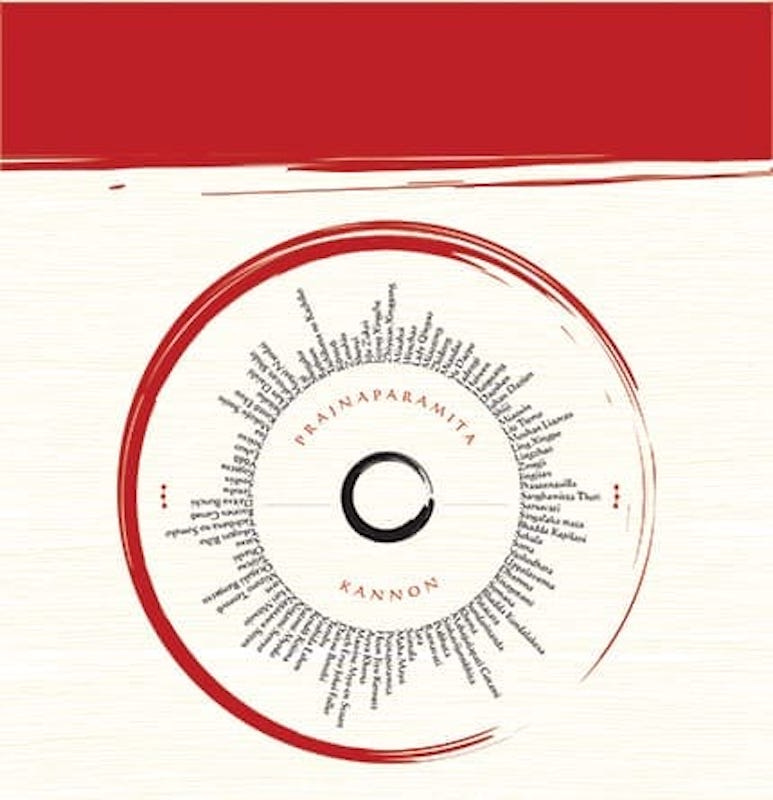Zen in Ten: Mt. Mo Does Not Reveal Its Pure Summit
The Wisdom of Zen Master Moshan Liaoran

As with other early Buddhist nuns and Chan/Zen female masters, there’s scant information about Moshan Liaoran’s life and how she entered The Way. “She’s one of the first women to be included in the American Zen curriculum.”1 Moshan means “Summit Mountain.”
“Moshan lived around 800 CE, the GoldenAge of Zen in China. She was a contemporary of another famous woman teacher of those times, Iron Grindstone Liu, successor of Master Yangshan. Other significant Zen figures of that era were Guishan, Linji, Dongshan, Deshan, and Zhaozhou, a worthy company of sages.”2
Dogen mentions Moshan in his fascicle “Raihai Tokuzui” (“Receiving the Marrow by Bowing”) as an exemplary Chan master. “She was a nun, a disciple of Gaoan Dayu, and the first woman Dharma heir in the official Chan transmission line, with a chapter about her in the Jingde Records (Records of the Transmission of the Lamp.)”3
Moshan is the first female Chan master to teach and transmit to a man: the monk Guanxi Xian. He was sent by his teacher, Master Linji Yixuan (founder of the Linji/Rinzai school), to meet her.
“When Guanxi Xian arrived at Mount Moshan, where she taught, he refused to bow to her or take off his traveling hat. He asked, ‘What is Moshan?’
Moshan replied, ‘The summit cannot be seen.’
He then asked, ‘Who is the master of Mount Moshan?’
She replied, ‘Without the form of a man or a woman.’
He shouted, ‘Why doesn’t she transform herself?’
She replied, ‘She is not a wild fox spirit, nor a ghost. What would you have her become?’
Guanxi bowed and took off his hat. He became the gardener at her monastery and stayed for three years.”4
Here’s what Dogen says about this storied meeting in “Receiving the Marrow by Bowing”: “Now, reflecting on this story, Mo-shan’s [. . .] power of satori was superior, and she became the mother who taught [Guanxi Xian]. Linji had inherited the Dharma of the great Zen master Huang-po. His was the great power of practice, and he became the father of [Guanxi Xian]. The father was male and the mother was female. [Guanxi Xian] showed that he had a superior spirit when he sought the Dharma from Mo-shan and paid homage to her. He was unflagging in his pursuit of later training, and he is famous for seeking the Dharma without consideration of male and female.”
After he studied with her, Guanxi Xian famously put her on par with his great teacher Linji Yixuan: “I received half a laddle at Father Linji’s place and half a ladle at Mother Moshan’s. Since I took that drink, I’ve never been thirsty.”5
Moshan’s ascending the platform in a Dharma hall to meet Guanxi Xian would have been in violation of the Eight Special Rules that Buddha decreed for women who wanted to become nuns. Her criticism and teaching of a male monk would have also been in violation6 of these “Eight Rules of Respect” that a nun must show to monks, even junior ones.
The question and answer that finally convinced Guanxi Xian that he could learn from Mt. Mo was “a question of the relevance to enlightenment of the distinction between male and female.” Mt. Mo tells him that her “enlightened Mind has neither male nor female [characteristics].” His response is “why don’t you transform yourself” into a man and “prove that you’re enlightened?” Moshan “does not recognize any need to transform herself.” 7
Moshan “shows her enlightenment precisely by not showing it, letting it be known that the top of her head is not visible. . . . [Guanxi Xian’s] question thus only shows that he does not realize that mind enlightened to any degree transcends distinctions of [phenomenal characteristics].” By bowing to Moshan, he “concedes the point that . . . the status of teacher is a matter of demonstrated wisdom, not of phenomenal characteristics.”8
“A Song dynasty writer penned a verse in praise of Moshan that is recorded in a classic Zen text named Guzunsu Yulu:
Mt. Mo does not reveal its pure summit,
But through all time the pinnacle is before the eyes.
It's said it has no male or female form,
But do distinguish the lotus amid the flames.
Without form, without mind, without intention,
Becoming male or female just accords with conditions,
These times are replete with monks and lay practitioners,
Each one shines with flawless incandescence.”9
Schireson, Grace. Zen Women: Beyond Tea Ladies, Iron Maidens, and Macho Masters. Somerville, MA, Wisdom Publications, 2009.
Loori, John Daido. Sitting with Koans. Boston, Wisdom Publications, 2005.
Caplow, Florence and Susan Moon. The Hidden Lamp. Boston, Wisdom Publications, 2013.
Ibid.
Ferguson, Andy. Zen’s Chinese Heritage. Boston, Wisdom Publications, 2011.
Schireson, Grace.
Levering, Miriam L. “The Dragon Girl and the Abbess of Mo-Shan: Gender and Status in the Chan Buddhist Tradition.” The Journal of the International Association of Buddhist Studies, 1982.
Ibid.
Ferguson, Andy.





This is wonderful!